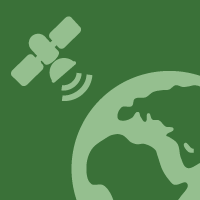Topic Menu
► Topic MenuTopic Editors



Natural Hazards and Disaster Risks Reduction

A printed edition is available here.
Topic Information
Dear Colleagues,
The physical forces governing the Earth system can give rise to abrupt and severe natural events as a violent expression of ordinary environmental processes. Their impact is unevenly distributed on the land surface because of complex continental, regional, and local natural processes that overlap with anthropogenic forcing. The derived climate variations can directly or indirectly exacerbate most of the occurrences at different spatial and temporal scales. When such phenomena interact directly with inhabited areas and society, different risk scenarios can develop, characterised by a continuous and persistent dynamic or by a rapid mutability. From this perspective, natural hazards create a potential disaster that could impact anthropic activities, either through loss of life or injury, or through economic loss. The degree of safety in a community is the result of differential exposures to these events and of the level of preparation for them based on awareness and perception. The social development and spatial growth of human activities by consuming soil and natural resources has further contributed to creating vulnerability, increasing the challenges of conscious societies to cope with severe natural processes and their effects. The protection of territory is a key element in the UN 2030 Agenda’s the action strategy for sustainable development. The risk reduction is one of the guiding criteria of the 2015–2030 Sendai Framework’s sustainability policy.
This Topic collects original papers and inherent studies of different types of natural hazards (extreme climate and weather-related events and geological occurrences such as floods, landslides, subsidence, volcanic eruptions, earthquakes, etc.), vulnerability domains, exposure to disaster risk, but also manuscripts whose contents can help to mitigate risks. Among them, technical interventions and operational methodologies oriented to risk reduction strategies such as plans, protocols, working procedures, early warning systems, and any other innovations in the sector or elements that combine modern concepts with consolidated realities of the past should be included. State-of-the-art techniques are encouraged in the following three operating areas: spaceborne, aerial, and terrestrial activities. Numerical and experimental investigations for basic or application research and representative case studies are welcome too. Interdisciplinary and multidisciplinary approaches are considered added values to contribute to progress in the field of responsible and sustainable risk mitigation.
Dr. Stefano Morelli
Dr. Veronica Pazzi
Dr. Mirko Francioni
Topic Editors
Keywords
- landslides
- earthquakes
- floods
- remote sensing
- modelling
- geophysical techniques
- climate change
- new technologies
- resilience
Participating Journals
| Journal Name | Impact Factor | CiteScore | Launched Year | First Decision (median) | APC |
|---|---|---|---|---|---|

GeoHazards
|
- | 2.6 | 2020 | 19 Days | CHF 1000 |

Land
|
3.2 | 4.9 | 2012 | 16.9 Days | CHF 2600 |

Remote Sensing
|
4.2 | 8.3 | 2009 | 23.9 Days | CHF 2700 |

Sustainability
|
3.3 | 6.8 | 2009 | 19.7 Days | CHF 2400 |

Water
|
3.0 | 5.8 | 2009 | 17.5 Days | CHF 2600 |

Preprints.org is a multidisciplinary platform offering a preprint service designed to facilitate the early sharing of your research. It supports and empowers your research journey from the very beginning.
MDPI Topics is collaborating with Preprints.org and has established a direct connection between MDPI journals and the platform. Authors are encouraged to take advantage of this opportunity by posting their preprints at Preprints.org prior to publication:
- Share your research immediately: disseminate your ideas prior to publication and establish priority for your work.
- Safeguard your intellectual contribution: Protect your ideas with a time-stamped preprint that serves as proof of your research timeline.
- Boost visibility and impact: Increase the reach and influence of your research by making it accessible to a global audience.
- Gain early feedback: Receive valuable input and insights from peers before submitting to a journal.
- Ensure broad indexing: Web of Science (Preprint Citation Index), Google Scholar, Crossref, SHARE, PrePubMed, Scilit and Europe PMC.

